- Bernard Preston homepage
- Solar geek
- Inverter for Home
Inverter for home
Inverter for home is useful for generating a high AC supply from storage batteries.
It is most often used in the solar power environment where sunshine is stored in two or more twelve volt DC batteries arranged in series or parallel.
New lithium ion batteries are changing the face of storing solar energy; they are cheaper than lead and have much better charge characteristics.
I am in fact about to make an upgrade after six years of lead cell batteries, and will report shortly.
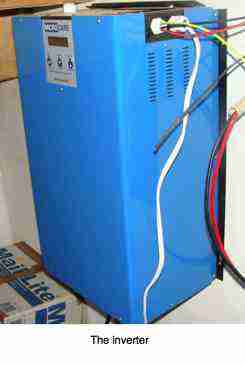
This page was last updated by Bernard Preston on 21st January, 2021.
Now it is a whole year later and time for an update; we have upgraded to two lithium batteries and it is chalk and cheese. No longer do we turn the inverter for home off at night and the change-over switch has become redundant. I candidly say it has been a vast improvement, not least because you are not afraid to drain them.
We are virtually off the grid apart from very short periods for heating water during inclement weather; less than 2 units of electricity per month in the summer and none in our winters which are cloudless. A change to prepaid electricity has been a great success; no further fixed-charges.
- Bernard Preston homepage
- Solar geek
- Inverter for Home
When the source of electricity from the utility is unreliable then an inverter for home is very useful as a backup, whether the batteries are charged from PV panels on the roof, or from mains.
When there is load shedding or frequent loss of power for whatever reason, you must have your own batteries.
They are heavy devices and are usually firmly bolted to the wall or, in the case of very large 10kW inverters, they may remain on the floor.
Fashionable in some homes and businesses is a small inverter and batteries on a trolley that can be wheeled about to where they are needed when the utility is load-shedding. And, of course, if a tornado has brought down the power lines.
Or, as is happening regularly in South Africa, cable thieves have stolen wires for scrap copper.
Inverter for home
Inverter for home is best turned off at night as it drains your stored energy, says Bernard Preston if you have old lead batteries. Stay on the grid if you possibly can; consider changing to prepaid electricity.
As with all electrical devices, always purchase a device with a capability that exceeds your needs. It makes no sense to purchase a 1kW inverter for your home if you are regularly going to be drawing 950W. It simply like the proverbial candle will not last the night.
As a rule of thumb I try never to exceed 80% of the declared capability.
"There is hardly anything in the world that
some man cannot make a little worse and sell a little cheaper, and the
people who consider price only are this man's lawful prey."
John Ruskin
Purchase only a renowned make. Choosing the cheapest inverter for your home is a recipe for disaster. This is certainly true if you are regularly stressing the device near its maximum output.
We are fortunate in South Africa having a local company called Microcare that makes extremely good inverters for businesses and home and MPPTs for the industry; and another Solar MD[5] that produces excellent lithium-ion batteries.
"To me power failure is now a thing of the past. There are South African companies that offer world-class service and products when it comes to solar."
- Welcome Ngwenya
Our inverter will energise the electric-oven, dishwasher and the bread machine, and all my carpentry tools including the thicknesser. Initially I was anxious about using the welder, but it is not a problem.
Every home, whether you are a greenie or not, should have an induction-stove though; they are gems, and not expensive, and your inverter loves it for cooking. They draw much less current.
On lead cells we found it necessary to switch off the inverter every night. Simply keeping the core activated draws current from the batteries, as will the cooling-fan which comes on periodically whether you are using power or not.
Your batteries are probably the most expensive part of your solar-generator; caring for them is an important facet of the maintenance of the system.
Newsletter
Our newsletter is entitled "create a cyan zone" at your home, preserving both yourself and Mother Earth for future generations; and the family too, of course. We promise not to spam you with daily emails promoting various products. You may get an occasional nudge to buy one of my books.
Here are the back issues.
- Lifestyle and ideal body weight
- What are ultra-processed foods?
- Investing in long-term health
- Diseases from plastic exposure
- Intensive lifestyle management for obesity has limited value
- A world largely devoid of Parkinson's Disease
- The impact of friendly bacteria in the tum on the prevention of cancer
- There's a hole in the bucket
- Everyone is talking about weight loss drugs
- Pull the sweet tooth
- If you suffer from heartburn plant a susu
- Refined maize meal and stunting
- Should agriculture and industry get priority for water and electricity?
- Nature is calling
- Mill your own flour
- Bake your own sourdough bread
- Microplastics from our water
- Alternative types of water storage
- Wear your clothes out
- Comfort foods
- Create a bee-friendly environment
- Go to bed slightly hungry
- Keep bees
- Blue zone folk are religious
- Reduce plastic waste
- Family is important
- What can go in compost?
- Grow broad beans for longevity
- Harvest and store sunshine
- Blue zone exercise
- Harvest and store your rainwater
- Create a cyan zone at your home
I tried not to drain my lead-crystal batteries ever below 80 percent which is why after
five years they were still perfect. Switching off the inverter for home
at night, and drawing a small amount of electricity from the utility for
your flood lights prolongs their life. However, a change to lithium cells has meant we no longer need to fuss.
It means turning off the pool pump too when using the oven or dishwasher, and not powering any of these devices on a cloudy day with solar; rather use mains-power during inclement weather.
As a rule of thumb, if the PV panels are providing say 2kW at any one moment, try not to exceed that using your home inverter for any length of time.
It means either having sophisticated switching gear that will do it automatically, or you have to keep an eye on the sky.
A lead-cell battery can only be drained a fixed number of times; on every occasion you exceed that, you lose a day of its life; a cheapo will only do a few hundred cycles, but top of the range will run into tens of thousands if you look after them.
Solar power energy
Solar power energy may be free, but the equipment to collect, store and use that electricity is costly. Not exceeding inverter for home's capabilities is an important part of the discipline of being a greenie, or even if you are just doing it to have power when the utility is load-shedding.
Many of the first installations of green energy alternatives in corporate SA were driven by environmental or social considerations, but uncertainty of supply and rapidly rising tariffs have made off-grid solutions more appealing than ever before.
Bronwyn Nortje, BD Live analyst.
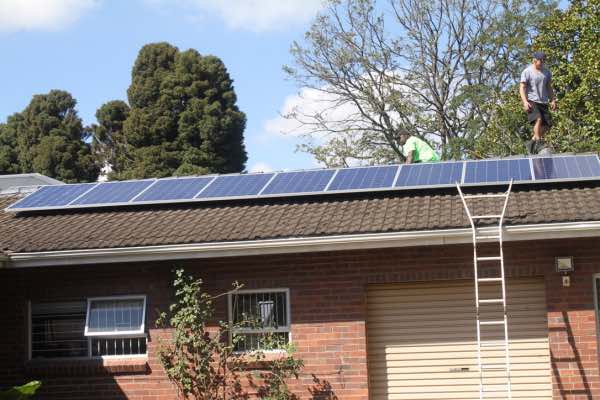
My advice is not to go less than 2kW with your inverter for home, and 3000W of PV panels. The more top notch batteries you purchase, the longer they will last. We had 8 x 200Ah batteries. I would have liked to have had more, but at around $500 apiece one does think twice before adding extra.
I am now considering for the first time going off the grid, with lithium-ion batteries. A utility spike of 431V caused immeasurable damage down our street, provoking this new direction. Instead we have settled for a prepaid meter that can be switched off most of the time protecting us against surges.
After the batteries the inverter for home is the next most expensive item; actually on a par with the PV panels on the roof. Make sure you include a knifeblade fuse to protect yourself.
I am currently doing a locum in Holland and it is interesting to note how many homes have added solar-arrays since we were last here two years ago. Four kilowatts of panels seems to be the norm, the same as we used to have.
Since penning this page, we have increased our PV panels to 10kW; it is enough for two connected homes. With an wholly unsatisfactory utility company it became necessary.
However, with the tentative decision to go off the grid in the future, we are adding more panels, and the two large lithium-ion batteries to support our aging lead cells; the latter are now history.
Charge controller MPPT
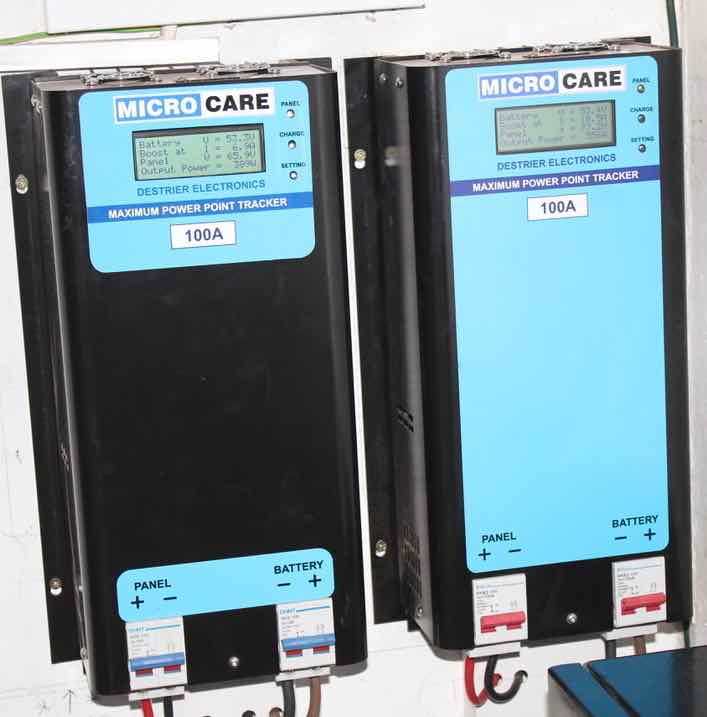
The other moderately expensive item on the agenda, after the inverter for home, is your solar charge controller, or MPPT. It increases the efficiency of PV by up to 35-percent. Once again, I recommend purchasing a larger device than you expect to use, unless you are absolutely certain you are not going to add more panels.
For example, if you have decided to add 1kW of west facing solar panels, as I have done, and you are quite sure you will not add more in this orientation, then there is no need for a 60A solar charge controller MPPT.
930W/ 48V = 19.4A.
Since PVs do not deliver their maximum potential, a 20 amp solar charge controller MPPT would be adequate, though I am glad we chose the larger one; understanding grows and one changes one's mind. Now we have 3.5kW of west-facing panels.
I added these west facing PVs to provide extra power in the late afternoon; they are less efficient than those oriented north (in the Southern Hemisphere), and I will not add more. The steepness of the panels is another factor, but in retrospect I agree with the general principle of the industry; place them flat on your roof.
Change-over switch
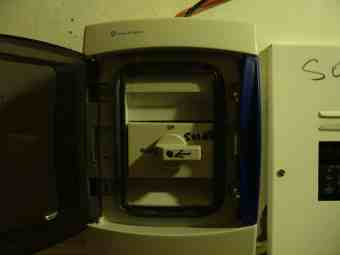
When using an inverter for home you cannot simultaneously have another power supply providing electricity; this is where the change-over switch comes in.
For example, let us say you have a solar generator and are still connected to the grid; should they come on together your inverter for home will be damaged.
In between the solar and grid poles there has to be a central pin, drawing power from neither for energy to power the sockets and lights in your home.
I have recently been on a boat. The owner inadvertently started the generator when the inverter was switched on; it was instantly fried.
This is an essential device; always use a change over switch.
When you change over to lithium-batteries and can go off the grid, or use only prepaid electricity, you will no longer need a change over switch; it is now being used to supplement the vacuum tubes for heating water.
Bernard Preston
Bernard Preston is a physics-major, but he is no electrical engineer. He is a DC at heart; this is hobby. Treat what you read here at inverter for home, if you will, with a pinch of salt.
Going green is a huge step and my advice is to talk to as many people as possible. Inverter for home is part of the backyard-permaculture philosophy; harvesting and storing water and electricity for use in your home and garden. Working with the environment instead of destroying it is our motto.
In 2015 South Africa was suffering from the worst drought some say in a hundred years; and it is certainly not over in the Eastern Cape. That's what global warming does. Floods in India and severely low-rainfall in our part of the world.
Recent unexpected rains have filled our underground reservoir, but done nothing for the dams that supply the utilities. We have plenty of electricity and water but our neighbours are in dire-straights; that is the beauty of permaculture.
What I can assure you is that over 40 months we have used on average 63kwh per month, diminishing steadily as I have added more panels. I have just added another 915W of west facing solar panels and am looking to getting our utility consumption down to 30-40kWh per month. Check you own bill to see how much you could save, notwithstanding creating a better world for your grandchildren.
As I update this now in 2021 we have used utility power only twice in the last year, amounting to perhaps 2kWh on each occasion; for hot-water during prolonged misty weather.
An inverter for home is now absolutely fundamental in Bernard Preston's establishment; we would not be without it. It means free electricity all day, directly from the sun to bake the bread, run the washing-machine, roast the chicken and of course provide a steady clean source of power for computers and television.
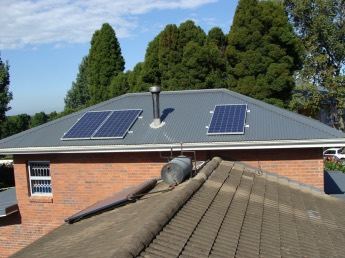
Here are the three extra west-facing panels for collecting the late summer sun. Attention needs to be paid to their placement near chimneys but my experience is that shadows on PV panels have less of a deleterious effect than expected.
Notice of course the evacuated tubes and geyser in the foreground; that is where I would start before thinking of an inverter for home. Most of every house's electricity use is in heating water.
When browsing use right click and Open Link in New Tab, or you may get a bad gateway signal.
- Solar power energy home page.
- In South Africa give consideration to Microcare pure sine wave bi directional inverters. I am very satisfied.
- Induction cooktop stoves.
- The green journey
- Solar MD
Did you find this page interesting? How about forwarding it to a friendly book or food junkie? Better still, a social media tick would help.
- Bernard Preston homepage
- Solar geek
- Inverter for Home
Address:
56 Groenekloof Rd,
Hilton, KZN
South Africa
Website:
https://www.bernard-preston.com